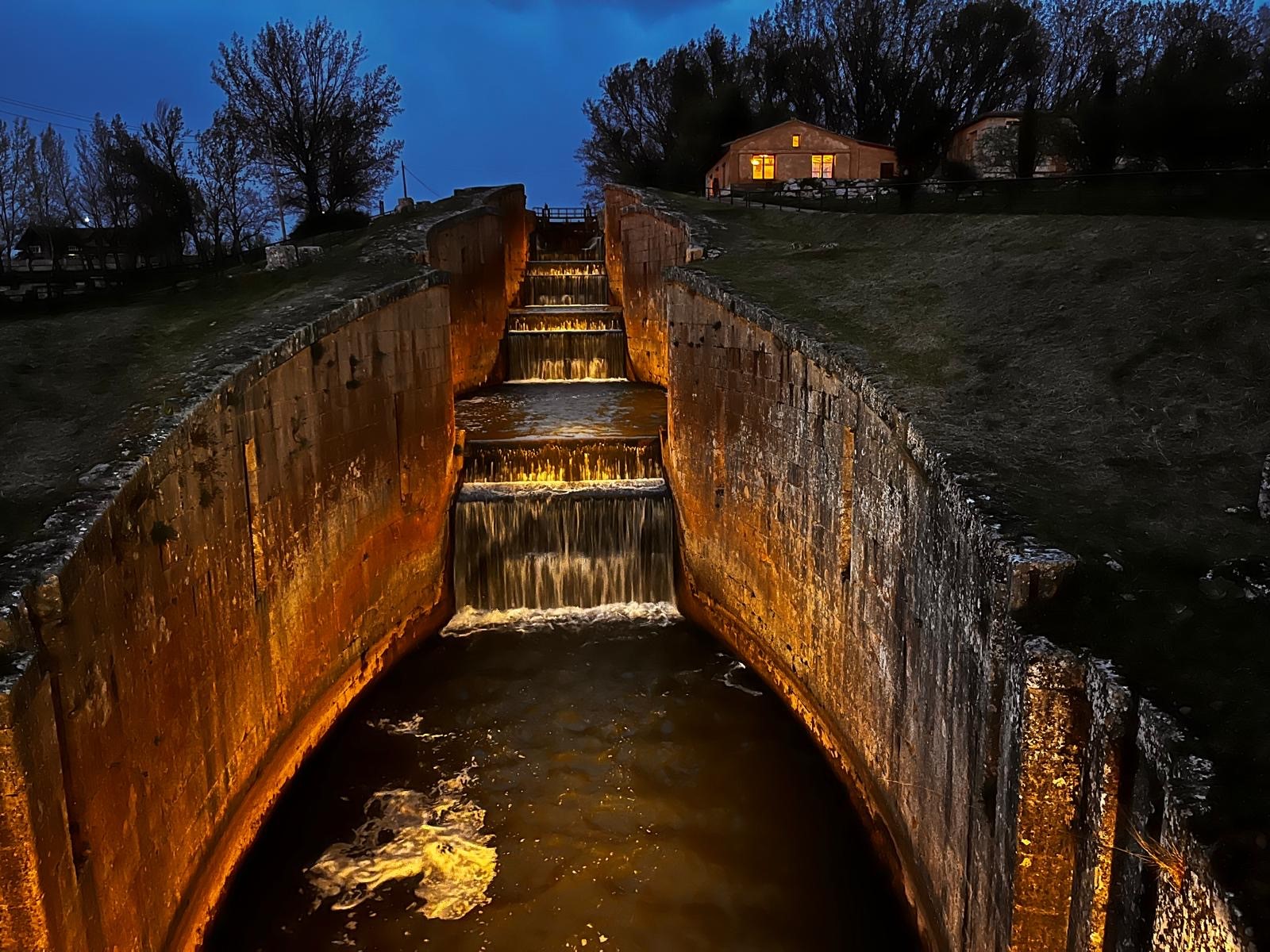The quadruple lock of the Canal de Castilla debuts sustainable lighting
- The Duero Hydrographic Confederation, the Frómista City Council, and the Iberdrola Spain Foundation have carried out this action that beautifies and improves energy efficiency in this tourist landmark in the Terracampina town
- The renewed lighting applies LED technology and accentuates its splendor through a design adapted to the heritage values of the enclave
The Duero Hydrographic Confederation, the Frómista City Council, and the Iberdrola Spain Foundation have inaugurated this afternoon a renewed sustainable lighting of the quadruple lock, a tourist landmark of the Terracampina town that represents one of the most important hydraulic engineering works of the Canal of Castilla, which crosses four slopes with a total of 14.20 meters high.
The president of the Duero Hydrographic Confederation (CHD), María Jesús Lafuente, the mayor of the town, Feliciano Montes Barberena, the president of the Palencia Provincial Council, Ángeles Armisén, and the president of the Iberdrola Spain Foundation, Fernando García, have been in charge of unveiling a commemorative plaque and presents another action that contributes to the sustainability of the ornamental lighting of the lock.
The project, which is part of the Lighting Program of the Iberdrola Spain Foundation, has involved an investment of 30,000 euros to provide this enclave with new lighting that accentuates its beauty through a design adapted to the heritage values of the lock.
This initiative has considered the criteria of efficiency and energy savings in addition to the use of LED technology: 1,000 watts of power have not been exceeded, mitigating CO2 emissions, reducing ambient light pollution, and respecting the natural environment of the enclave. A very careful installation has been carried out, taking into account reversibility criteria.
It is a particular performance that has to do with a unique component, the vibration of water since light provides a much more enriching dynamic element. The warmth of the ashlars of the locks has been taken advantage of to influence the movement of the
water in an element that is from zero level downwards, unlike most monuments. From the total darkness, light emerges from the depths.
“The renewal of the lighting of this engineering work is another example of Iberdrola’s commitment to Castilla y León and its permanent purpose of promoting the social value of the culture, origin, and conservation of the historical-artistic heritage of the region,” said the president of the Iberdrola Spain Foundation, Fernando García.
For her part, the president of the Duero Hydrographic Confederation (CHD), María Jesús Lafuente, wanted to highlight this initiative that “will incorporate into this enclave criteria of efficiency, energy savings and respect for the natural environment on which the Organization is committed. ”.
A Strategy to boost the value of the Canal de Castilla
This action is part of the 2021-2024 Strategy of the Duero Hydrographic Confederation, to combine the social and historical value of the Canal de Castilla with its environmental potential, with a global investment of more than 16 million euros.
The actions contemplated include the restoration of part of the canal’s infrastructure (hydraulics and related buildings) to improve the conservation of its rich material heritage. Likewise, a green corridor will be developed around the Canal, as a cultural landscape and backbone element of the territory.
The Canal de Castilla is one of the most paradigmatic hydraulic works managed by the Duero Hydrographic Confederation. The Strategy launched by the Agency includes actions along the 207 kilometers through which the Canal runs in the provinces of Palencia, Burgos, and Valladolid. Currently, its waters irrigate more than 21,000 hectares and supply 400,000 inhabitants of the provinces of Valladolid and Palencia.
Iberdrola, with the promotion of art and culture
One of Iberdrola’s main areas of action, through its foundation in Spain, focuses on the care, conservation, and enhancement of historical-artistic riches.
the Illuminations Program is to develop interventions in unique buildings to install or improve their interior and/or exterior lighting systems to contribute to the enhancement of heritage.
Since 2011, the volume of investment allocated to the Illuminations Program has risen to more than 3 million euros and has led to the improvement of more than 50 monuments in Spain, among which the interior of the Cathedral of Castilla y León stands out. Palencia and the New Cathedral of Salamanca, the Palencia church of San Hipólito el Real, or the Cathedral of Ávila.

